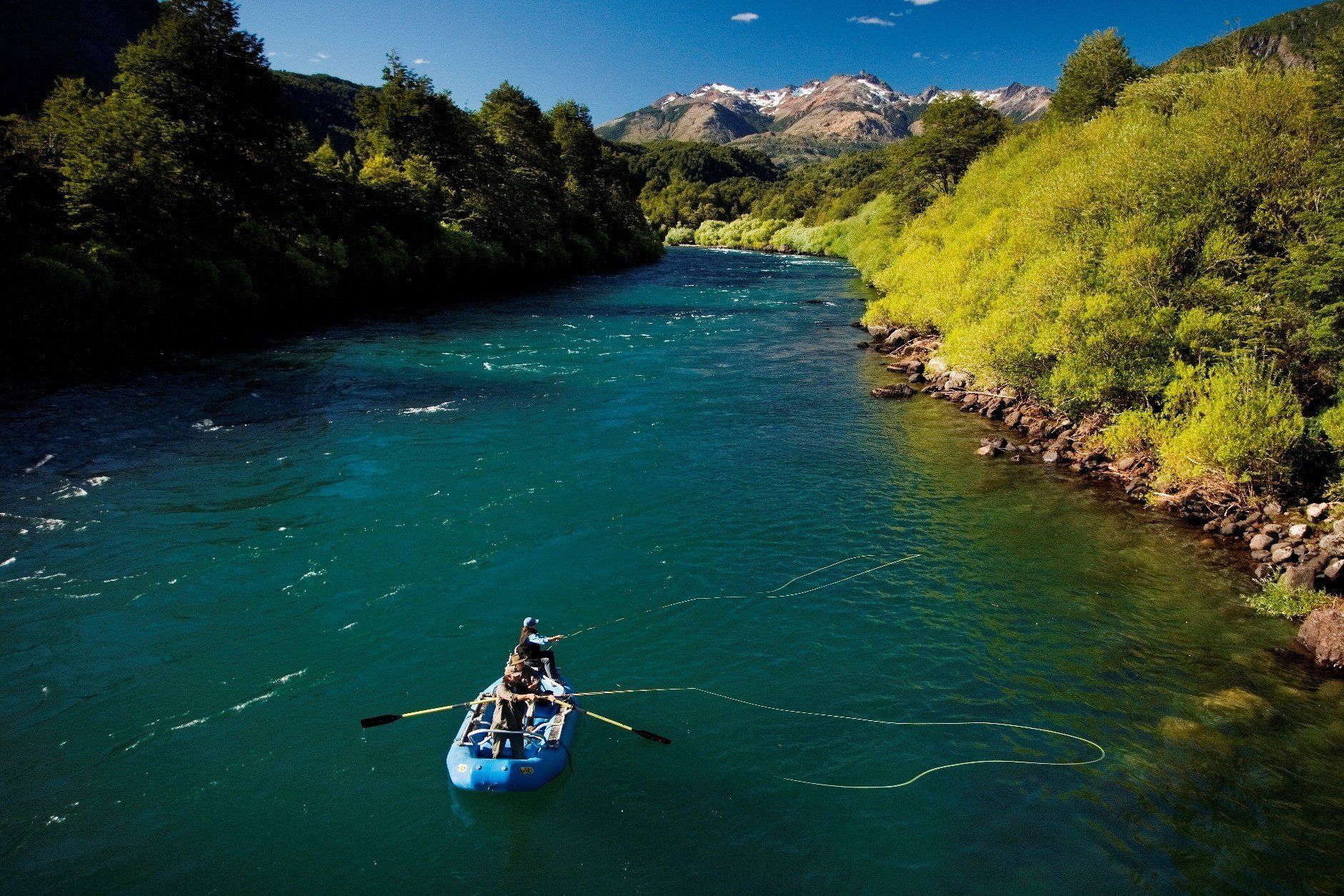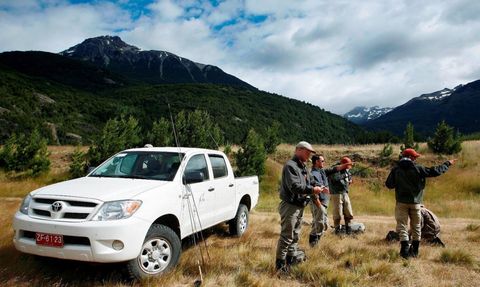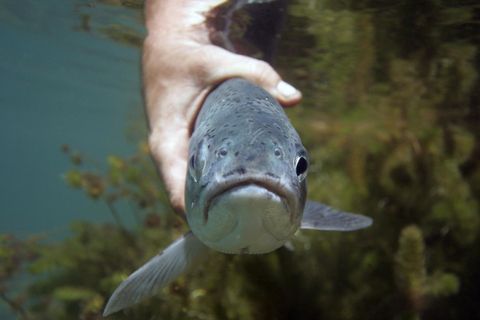
Chile

Chile, officially the Republic of Chile, is a South American country occupying a long narrow strip of land between the Andes Mountains to the east and the Pacific Ocean to the west. It borders Peru to the north, Bolivia to the northeast, Argentina to the east, and the Drake Passage in the far south. A long and narrow coastal country, Chile stretches over 4,300 kilometres (2,670 miles) north to south, but only 350 kilometres (217 miles) at its widest point east to west, making the country more than eighteen times longer than its widest point. It contains 756,950 square kilometres (292,260 square miles) of land area and encompasses a remarkable variety of climates and landscapes. Chile has an estimated population of over 18 million and its capital and largest city is Santiago. The national language is Spanish, however, through initiatives such as the English Opens Doors Program, the government made English mandatory for students in fifth-grade and above in public schools. Most private schools in Chile start teaching English from kindergarten. Common English words have been absorbed and appropriated into everyday Spanish speech.
Chile is a very culturally rich country, starting from the period between early agricultural settlements and up to the late pre-Hispanic period, northern Chile was a region of Andean culture that was influenced by Altiplano traditions spreading to the coastal valleys of the north, while southern regions were areas of Mapuche cultural activities. Throughout the colonial period following the conquest, and during the early Republican period, the country's culture was dominated by the Spanish. Other European influences, primarily English, French, and German began in the 19th century and have continued to this day. German migrants influenced the Bavarian style rural architecture and cuisine in the south of Chile.
Chile is a country of startling contrasts and extreme beauty, with attractions ranging from the towering volcanic peaks of the Andes to the ancient forests of the Lake District. There are a multitude of very good parks here, and plenty of opportunities for adventure travel. Chile is justly famous as the location of Torres del Paine National Park, considered by many to be the finest nature travel destinations in all of South America. In the center of the country is a long and expansive river valley, a five-hundred-mile corridor occupied in the north by vineyards and great farms and in the south by primeval forests and enchanting lakes. Santiago, the capital, anchors the northern and more prosperous section of the central valley. The lush Lake District to the south, however, is the homeland of Chile's indigenous peoples, the Araucanians.
Also part of Chile are two notable Pacific possessions-the Juan Fernandez Islands and the famous Easter Island, both of which are administered as national parks. The Juan Fernandez islands are located about 670 kilometres (416 miles) off the Chilean coast, while Easter Island is situated 3700 kilometres ( 2300 miles) away.
Chile's geographical isolation has restricted the immigration of faunal life, so that only a few of the many distinctive South American animals are found here. Among the larger mammals are the puma or cougar, the llama-like guanaco and the fox-like chilla. In the forest region, several types of marsupials and a small deer known as the pudu are present.
Chile is a very culturally rich country, starting from the period between early agricultural settlements and up to the late pre-Hispanic period, northern Chile was a region of Andean culture that was influenced by Altiplano traditions spreading to the coastal valleys of the north, while southern regions were areas of Mapuche cultural activities. Throughout the colonial period following the conquest, and during the early Republican period, the country's culture was dominated by the Spanish. Other European influences, primarily English, French, and German began in the 19th century and have continued to this day. German migrants influenced the Bavarian style rural architecture and cuisine in the south of Chile.
The most obvious factor in Chile's geography is the virtually impassable wall of the Andes, a mountain range that is still rising and that contains more than fifty active volcanic peaks. The western border is of course the Pacific Ocean, but it is a misconception to picture Chile as nothing more than the steep western slope of the Andean peaks. All along its length Chile is marked by a narrow depression between the mountains and the sea. To the north the land rises and becomes more arid, until one reaches the forbidding Atacama Desert, one of the most inhospitable regions on earth. To the south the opposite transformation takes place: the land falls away, and the region between mountains and ocean fades into the baffling archipelagic maze that terminates in Chilean Patagonia. Chile's southern extremity is marked by Cape Horn, a treacherous headland surrounded by almost continuously storm-tossed seas and passable only through the foggy stillness of the Strait of Magellan.
Also part of Chile are two notable Pacific possessions-the Juan Fernandez Islands and the famous Easter Island, both of which are administered as national parks. The Juan Fernandez islands are located about 670 kilometres (416 miles) off the Chilean coast, while Easter Island is situated 3700 kilometres ( 2300 miles) away.
Chile's climate is as diverse as its geography. Aside from the obviously extreme climatic conditions of the Andes and the Atacama, however, the country enjoys a comfortable temperate climate.
Mixed into the stunning landscape are hundreds of glaciers which branch off the ice fields, many extend all the way to sea level. Meltwater from the glaciers gather in lakes such as the General Carrera - the second largest lake in South America. The Lake Region of the south, is a group of mostly small, clear blue, cold-water lakes; in this area, waterfalls are common. As for rivers, dozens rise in the upper reaches of the Andes and flow either to the Pacific Ocean, or east through neighboring Argentina. Some of Chile’s most important rivers, from north to south, include the Loa, Aconcagua, Maipo, Maule, and Biobío, all of which empty into the Pacific. These rivers and lakes are home to brown, rainbow and brook trout, including sea-run populations, as well as steelhead and salmon species.

Chile

Chile



